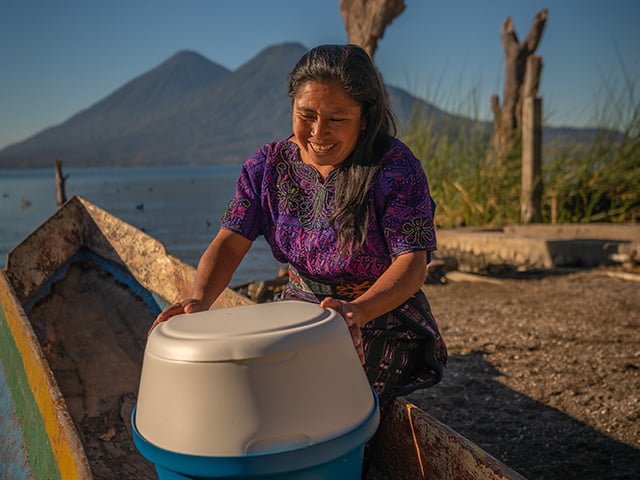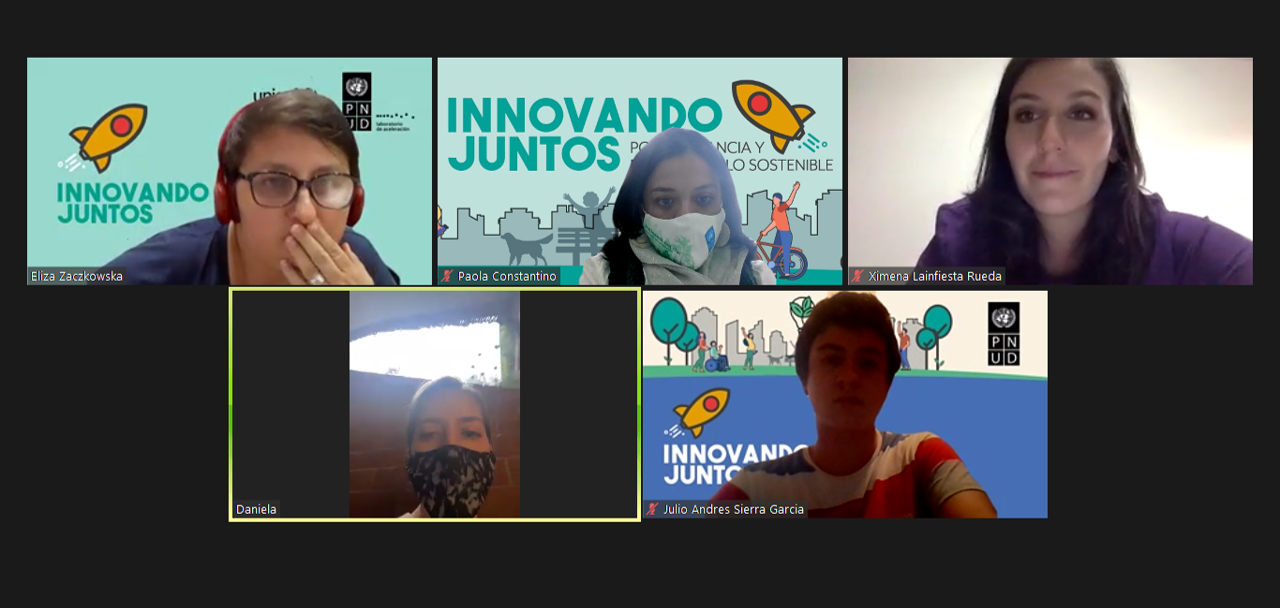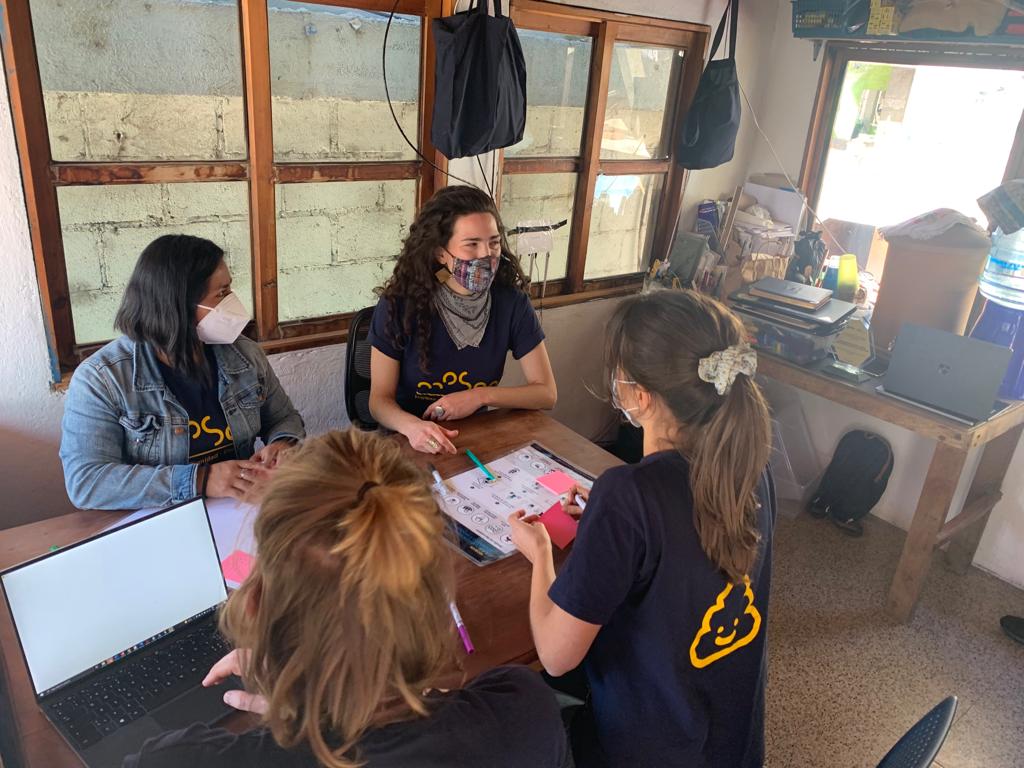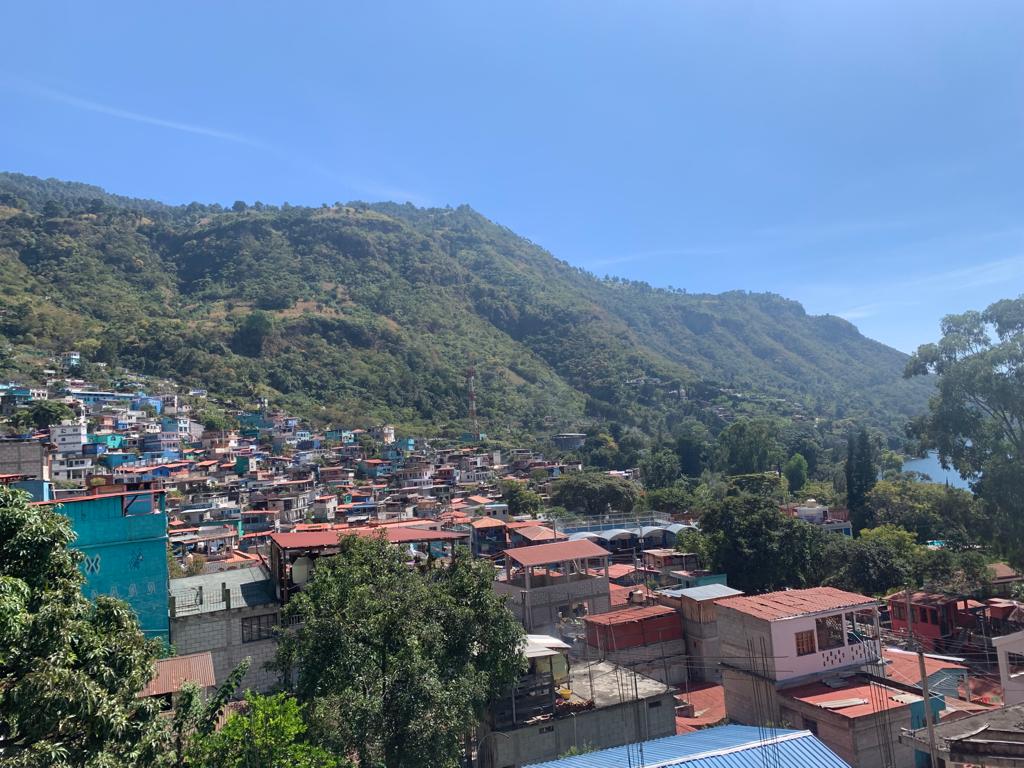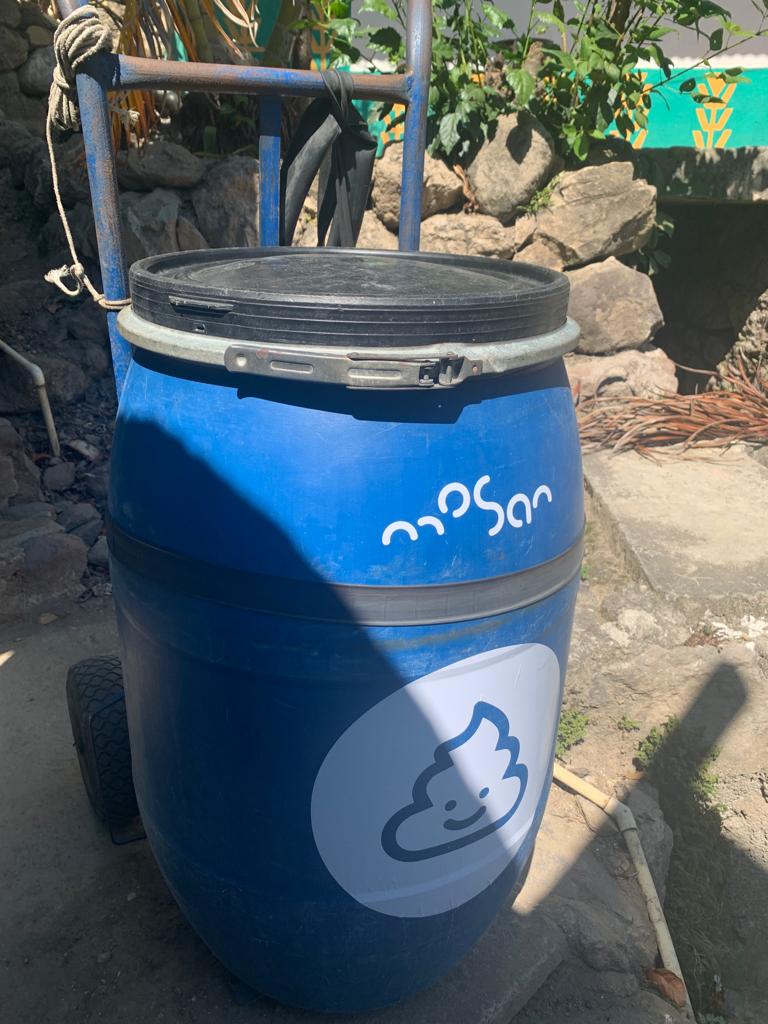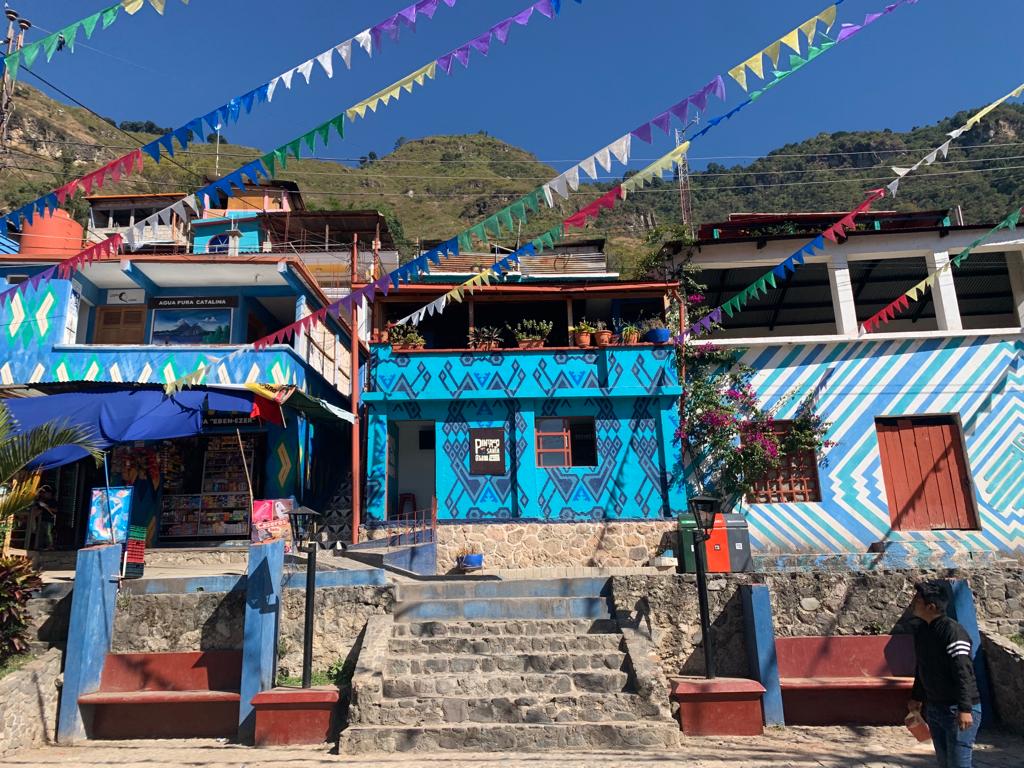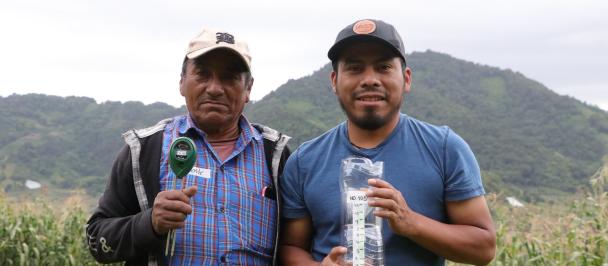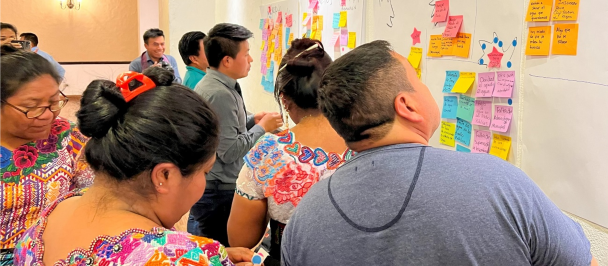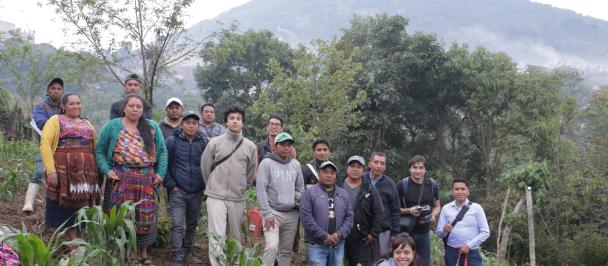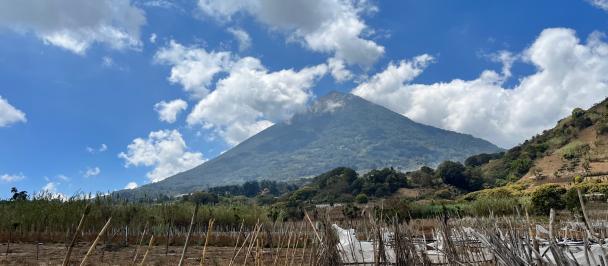As we begun the year, filled with energy to keep tackling into our 2022 challenge on how to promote a sustainable waste management, we’ve been reviewing our lesson learnt in 2021, to consider to our next steps.
From the United Nations Development Program (UNDP) and Acc Lab, we are sharing the process, and results of the third edition of the challenge "Innovating together for children and sustainable development", launched in partnership with United Nations Children's Fund (UNICEF). Preparation began in late July 21; however detailed logistics were carried out during October and November. Our challenge aimed to promote the co-creation of innovative solutions that contribute to solving critical problems in Guatemala such as waste management and clean affordable energy in partnership with Small Grants Program (SGP-GEF) within the Energy and Environment UNDP Program.
Scouting grassroots solutions and start-ups
When we launched the event, we weren’t sure on the number of solutions we could find waste management or clean energy. Although the social networks allowed us to be highly visible and reach the entire country, somehow, this path was not enough. We personally contacted the participants in the sustainable development category for the 2021 National Innovation Contest, with our partner SENACYT (National Secretariat of Science and Technology) in which the UNDP accompanied. We also spoke directly to different ecosystems to spread the word. Results surpassed our expectation, having 19 participants with different proposals. We selected the top 10 with an assessment committee, to join our Innovation and Acceleration Week! Most of the solutions were presented already as (micro) enterprises or star-ups.
A week of workshops and design thinking sprints to build an acceleration plan
Our opening of the acceleration sprints, started with a lecture and dialog of Kingo Energy, the National Innovation Prize 2021 winner, followed by an open forum with small and medium successful entrepreneurs on environment (Por Un Mundo Limpio como El Vidrio, Recupera Gt, Asociación Ambiental Guatemala 22), and academia with research and development experts in climate change and science (URL-IARNA, SENACYT). Throughout the process, workshops and personalized mentoring were conducted for the participants, with the support of experts in people-centered-design, entrepreneurship, and innovation.
Innovation and Acceleration Challenge, an opportunity to strengthen the ecosystem
We have been able to identify different community solutions during the formulation and execution of the challenge along with SGP-GEF, the Ministry of Environment and the Association of Energy Solutions in Guatemala. All of them have a great potential, however the winning solution, Mosan, consists of a closed system for the treatment of household sanitary waste that transforms feces and urine from rural communities into organic fertilizers, preventing them from contaminating nearby bodies of water (surface and subway) and their immediate surroundings.
So far, this solution is already contributing to the community of Santa Catarina Palopó, providing an alternative management for human organic waste, and preventing polluted water and material be thrown at Lake Atitlan.
Validating the solution in the field
In late November as Acc Lab, UNDP Communications Team, and local producer “Chapinfilms”, we headed to Sololá in the western territory of Guatemala, specifically to the town of Santa Catarina Palopó, which is located on the shores of beautiful Lake Atitlán to finally meet the Mosan team in person and to learn from their implementation. Our purpose was also document professionally in an audio-video production the context, local cultural assets, considering most of the population belongs to the Kakchikel linguistic community, the opportunities, and challenges of a small town, and of course get to meet the Mosan’s champions (local users).
Our meeting point with the MOSAN was at their office, which is located right in front of the central park of Santa Catarina Palopó. First, we were able to meet part of their amazing team, which consisted of Mona Mijthab, the project director; Omar Crespo, strategy, and communication; Martha Gomez, operations manager and Rudy Mata, service staff. It is worth mentioning that there are other members of the team who could not join us that day. After this, Mona, explained to us how the MOSAN system works. The system starts with the portable toilet, which is made of a resistant plastic material and has an ergonomic design with two containers to separate feces from urine; these compartments are interchangeable so that when they are full, they can be exchanged for new ones. When the garbage cans are full, the MOSAN team visits the home to exchange the garbage cans and take the waste to the transformation center, where it is converted into organic fertilizer. In addition, they promote water, sanitation, and hygiene awareness (WASH) to accelerate behavioral change and their methods of transmitting information are based on direct community participation, educational events, and creative training workshops.
After the Mosan functional explanation of the system, we were able to better contextualize the situation of Lake Atitlán and the community of Santa Catarina Palopó; it is important to know that the wastewater from the communities around the lake - together with waste and agricultural wastewater - flows directly into the streams that reach the Lake, mostly - 89% - without any filtration. Daily, an estimated 43 million liters of wastewater enter Lake Atitlán from all the communities in the watershed. Now, speaking specifically of Santa Catarina, this Mayan community is home to approximately 1, 000 families (5,675 inhabitants. INE 2012), only 1,9% of the toilets are connected to the municipal sewage system, the rest of them being latrines, septic tanks, and simple pits. The problem with non-technified septic tanks and latrines is that feces and urine leak into nearby water sources and groundwater, contaminating them and causing gastrointestinal illnesses due to the ingestion of the same waste through the water. In addition, the few homes that have plumbing systems send their waste directly to the lake through a pipe or to a municipal treatment plant, which only performs primary treatment (meaning that the disease-causing bacteria are not eliminated in their entirety). These alarming data regarding the pollution problem in the town, make it clear that there is a great need for sanitation and sanitary waste management projects that are accessible and affordable to all.
Meeting the Champions
Afterwards we headed to the most exciting part of our trip: getting to know how the system works on a normal working day and the users of this solution. We started the tour at the entrance of one of the alleys of the village, which is located on a mountain, so all roads are steep and there is no access for vehicles. The tour was guided by Rudy (in charge of collection and transformation services), who has the important task of visiting each of the users' homes and changing the containers that are already full of urine and feces and leaving new containers.
During the tour to the homes, we were able to observe the artesian drains and pipes where gray and black water is transported throughout the community. It is worth mentioning that the smell near these places is quite bad and strong, besides they are places where diseases can spread and call other transmitting vectors, such as flies, insects, or small rodents.
The first house we visited was that of Ana, an indigenous woman who has been using the service for several months. She expressed that she is satisfied with the system and plans to continue using it. Afterwards, we continued our tour through different alleys and stairways, until we reached the house of Pedro, one of the village elders, whom everyone in the community respects and listens to; this is very important, because important figures within the community are starting to use the service, which means that they are an example for other people and can trigger a community change. Pedro, who has been using the Mosan service for a little over a year, was gracious enough to agree to be interviewed. In the interview, Pedro expressed that he is very satisfied with the service, as he does not need to wastewater, the price is reasonable, it does not take up much space in his house, and he feels satisfied to be part of the change. He is a native of Santa Catarina, so it is understandable that he is concerned about protecting the lake where he grew up. Pedro, who is a father and grandfather, has encouraged his children to start using Mosan's service with their families in the same way, which is very positive. Then, he took us to visit his coffee plantations next to his house, which are an excellent example of where the fertilizer generated with his own waste could be used and, in this way, close the cycle completely.
Circular economy ahead!
Finally, after collecting the containers with the waste, we walked to the -Transformation Center-, where the waste is transformed into fertilizers. Once at the center, Martha Goméz explained to us the transformation process: first, the feces go through a drying process, where they are mixed with wood chips and left exposed to the sun, and then the feces enter the pyrolysis chamber, where they are taken to high temperatures in the absence of oxygen. As a result of the process, two products are currently obtained: biochar and struvite. Biochar is a charcoal product that can be used as a soil amendment, improving soil quality, and can help sequester CO2, absorbing it into the soil and acting as a "carbon sink" that greatly reduces global greenhouse gases. Struvite, a phosphorus mineral, can be applied directly in agriculture as a fertilizer.
We observe that delving in the entrepreneurial journey of Mosan, we hope to get to more partners who can contribute in various ways and inspire more innovators locally and abroad.
Next stop? Acceleration
We hope that through the acceleration and diffusion process, more developing communities in the area will use the Mosan. We are working with the Small Grants Program, (SGP-GEF), so that the implementation of the acceleration begins in March 2022. We are currently in the process of obtaining the appropriate technical and business support to strengthen the solution and connect Mosan with other local governments that may be interested in learning and considering it for their communities.
In addition, we trust that the other participating solutions will advance with their proposal and will soon be relevant actors to advance the 2030 Agenda for Sustainable Development in Guatemala, particularly in matters of waste management and clean/affordable energy: therefore, as UNDP Accelerator Lab in Guatemala we want to share soon on a global scale in Platform For Tomorrow.
Stay in tuned for our next mini – documentary on the process!
Blog written by:
Paola Constantino
Head of Solutions Mapping
Julio Sierra
Assistant of Head of Solutions Mapping

 Locations
Locations